 The Yogabliss on-line Moving into Meditation class met this morning. I look forward to getting together all week long. I think about our practice and especially the joy of sharing faces and stories. This week we explored the paradox of being alone together. Our readings were inspired by Stephen Batchelor’s new book, The Art of Solitude and Terry Tempest Williams’ old book, Finding Beauty in a Broken World. Stephen is a meditation teacher and Buddhist scholar. You can listen to Finding Ease In Aloneness, a lively discussion with Krista Tippett of On Being about the difference between loneliness and intentional solitude that draws us more deeply into life. Terry Tempest Williams is an American writer, educator, conservationist, and activist. You can listen to a deeply moving conversation with Tami Simon of Sounds True. Terry shares about how she found beauty and meaning after personal and world tragedies.
The Yogabliss on-line Moving into Meditation class met this morning. I look forward to getting together all week long. I think about our practice and especially the joy of sharing faces and stories. This week we explored the paradox of being alone together. Our readings were inspired by Stephen Batchelor’s new book, The Art of Solitude and Terry Tempest Williams’ old book, Finding Beauty in a Broken World. Stephen is a meditation teacher and Buddhist scholar. You can listen to Finding Ease In Aloneness, a lively discussion with Krista Tippett of On Being about the difference between loneliness and intentional solitude that draws us more deeply into life. Terry Tempest Williams is an American writer, educator, conservationist, and activist. You can listen to a deeply moving conversation with Tami Simon of Sounds True. Terry shares about how she found beauty and meaning after personal and world tragedies.
Guided Relaxation
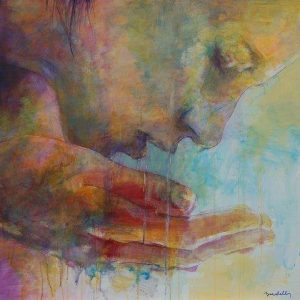 Thank you so much for being here . . . this here that is purely the moment after moment expressed in sound and sensation . . . so much unseen and yet embodied . . . . You can feel . . . You can breathe . . . Together we experience ordinary miracles . . . We can stretch time and wonder in the continuous stream of changes in our bodies . . . How does your body make itself known to you? Can your mind agree to hold sensations long enough to create a true relationship? Feeling your feet long enough to come to know them? How do you feel the weight of stillness in your chest? Can you sense the intelligence of your hands? Here we are – alone and together . . . savoring life.
Thank you so much for being here . . . this here that is purely the moment after moment expressed in sound and sensation . . . so much unseen and yet embodied . . . . You can feel . . . You can breathe . . . Together we experience ordinary miracles . . . We can stretch time and wonder in the continuous stream of changes in our bodies . . . How does your body make itself known to you? Can your mind agree to hold sensations long enough to create a true relationship? Feeling your feet long enough to come to know them? How do you feel the weight of stillness in your chest? Can you sense the intelligence of your hands? Here we are – alone and together . . . savoring life.
When we come to meditate we agree to be alone with ourselves . . . to let go of controlling our experience and allow it to unfold. We are taught to follow our breath . . . body sensations . . . to stay still through the waves of mental states drawing us to distraction . . . Learning what it is to be human. Learning to be alone with ourselves without judgment . . . making peace with ourselves or perhaps laying down our arms. Sometimes we experience isolation . . . loneliness . . . these states have signatures written on our bodies . . . in our minds . . . We can also experience the ease with the aloneness inside ourselves known as solitude.
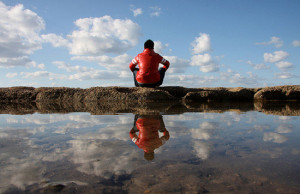 In stillness we experience the mystery of solitude . . . If we give ourselves enough time our inner turmoil spends itself out like a long rolling wave unfurling . . . every emotion having its own ebb and flow . . . a life of its own . . . In riding those waves we come to know ourselves in such a pure way . . . the smallness and also the largeness of the life that we are . . . Through the courage and energy we bring to this relationship with ourselves we cultivate our well-being.
In stillness we experience the mystery of solitude . . . If we give ourselves enough time our inner turmoil spends itself out like a long rolling wave unfurling . . . every emotion having its own ebb and flow . . . a life of its own . . . In riding those waves we come to know ourselves in such a pure way . . . the smallness and also the largeness of the life that we are . . . Through the courage and energy we bring to this relationship with ourselves we cultivate our well-being.
Stephen Batchelor, meditation teacher, scholar author of The Art of Solitude writes:
We can learn to . . . create a solitude in which we feel at home and grounded. I think . . . it has to do with refining our capacity to see where our impulses are coming from, to what extent those impulses are . . . driven by conditioning and habit and fear, and to what extent we can somehow open up a nonreactive space within us. So . . . the practice of solitude, is the practice of creating an inward autonomy within ourselves, an inward freedom from the power of these overwhelming thoughts and emotions.
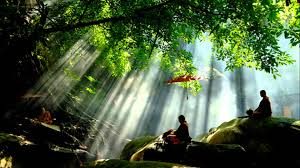 Our personal experience is embodied within ourselves and also within our network of family, friends, community, the natural world. What is like to be embodied in the world? Can we truly answer that question unless we are willing to create the inward autonomy that Stephen describes? What is it like to be you? How is it to be in your own company? The nature of your own thoughts . . . seeds of your creativity? Might you discover that nonreactive space within?
Our personal experience is embodied within ourselves and also within our network of family, friends, community, the natural world. What is like to be embodied in the world? Can we truly answer that question unless we are willing to create the inward autonomy that Stephen describes? What is it like to be you? How is it to be in your own company? The nature of your own thoughts . . . seeds of your creativity? Might you discover that nonreactive space within?
Stephen describes the paradox of being alone together in the world. Going inside ultimately draws us outside. After making friends with ourselves we can meet the world anew. He talks his many years of monastic life:
. . . my own training as a monk in contemplative traditions has not made me become isolated and introspective and wary of other people — very much the opposite. I find that having that groundedness, that . . . basic sense of being OK, of being at home with myself . . . is the foundation from which I can . . . really communicate more authentically and more directly with others; I’m not concerned about what they think about me or what they are gonna say or what they want, but I have a resource within myself that is my own, deeply earned truth . . . integrity.
What is your home like – truly? How does your inner world influence your outer world? Each time we come together – we are building that home within ourselves – the inner foundation from which we can engage the world more deeply – we truly see and we can allow ourselves to be seen.
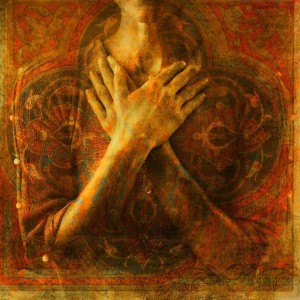 This foundation, the home we build, takes devotion. Each time we truly decide what we choose to focus our attention on we imprint our intentions on our selves and on our world. We can easily become entranced by the many screens that surround us – phones, computers, TVs. We can consider poet Jane Hirshfield’s reminder that “attentiveness only deepens what it regards.”
This foundation, the home we build, takes devotion. Each time we truly decide what we choose to focus our attention on we imprint our intentions on our selves and on our world. We can easily become entranced by the many screens that surround us – phones, computers, TVs. We can consider poet Jane Hirshfield’s reminder that “attentiveness only deepens what it regards.”
Stephen describes the practice of solitude as bringing ourselves back into ourselves:
. . . to not let our emotions and our thoughts just dissipate out into the world, but to gain some way in which we harness those energies, we return them to our own inner awareness, inner consciousness, and we become, therefore, much more careful and much more caring as to how we do express ourselves. Solitude actually establishes the foundation for . . . taking a more reasoned and reflective, a calmer, a slower way of saying and acting in ways that, hopefully, others will . . . value. . . . again, solitude, interaction, in the end turn out to be two parts of the same experience.
We look deeply within so that we may be more fully present – more compassionate. Stephen describes solitude – meditative reflection as a way of refining our ethical intelligence – our interiority is the “field of ethical behavior” on which we see that we have choice. What do we choose to focus on? Does the subject enhance our humanity? Does it deepen our relationship with the world?
In her book, Finding Beauty in a Broken World, Terry Tempest Williams writes:
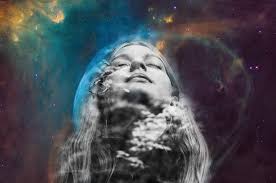 What is real to me is the power of our awareness when we are focused on something beyond ourselves. It is a shaft of light shining in a dark corner. Our ability to shift our perceptions and seek creative alternatives to the conundrums of modernity is in direct proportion to our empathy. Can we imagine, witness, and ultimately feel the suffering of another?
What is real to me is the power of our awareness when we are focused on something beyond ourselves. It is a shaft of light shining in a dark corner. Our ability to shift our perceptions and seek creative alternatives to the conundrums of modernity is in direct proportion to our empathy. Can we imagine, witness, and ultimately feel the suffering of another?
And here we are – today – we allow our perceptions to shift in fields of stillness and currents of movement. We create a circle of light in which we can imagine, witness and ultimately feel for one another.
